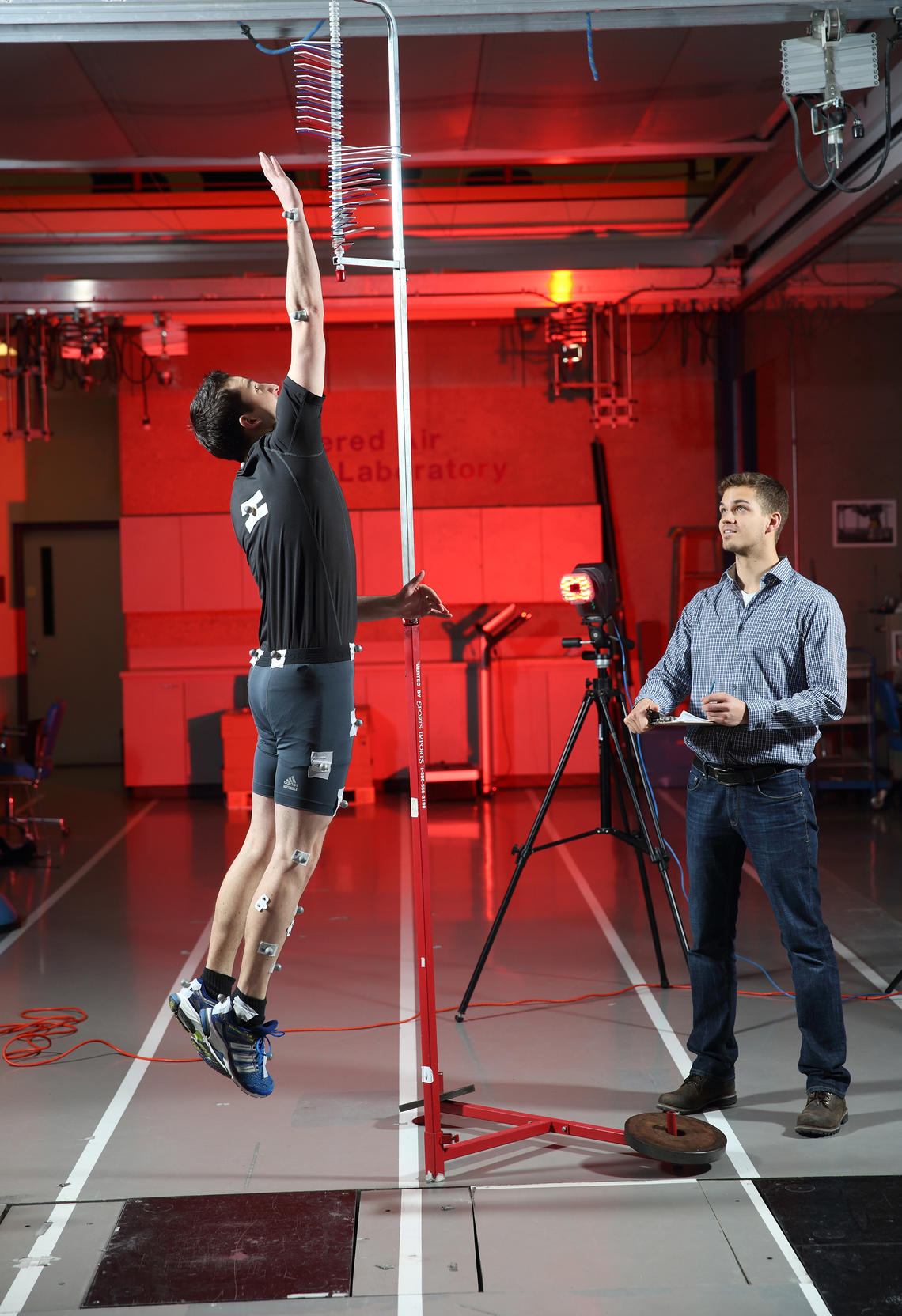June 6, 2019
Class of 2019: You have to stay stronger than ever after a knee injury, kinesiology PhD finds

Joanna Weihrauch-Mohr, Bernhard Mohr, Christine Mohr, Maurice, and his supervisor Benno Nigg.
Michael Asmussen
Maurice Mohr was running to reach the ball during a soccer game when his knee twisted and he fell, tearing his anterior cruciate ligament and meniscus in the process.
“I had the exact injury I was investigating. Later, I told my test subjects that I just wanted to better understand how they feel,” jokes Mohr, 29, who is convocating this week with a PhD in kinesiology specializing in biomechanics.
All joking aside, Mohr, who is originally from Germany and was fast-tracked into the PhD program in 2015, takes his studies very seriously. His studentship was funded through Alberta Innovates and the Izaak Walton Killam Pre-Doctoral Scholarship, and he served as editor-in-chief of the peer-reviewed Journal of Undergraduate Research in Alberta for two years.
In his work with the Nigg Research Group in the Faculty of Kinesiology, Mohr studied innovative ways to understand how muscle activation patterns change after a knee joint injury, with the hope that research could help to improve rehabilitation strategies and reduce long-term health problems that are injury-related.

Mohr tests the subject's jump height while recording his lower body movement via 3D motion capture.
Faculty of Kinesiology
His doctoral thesis, "Lower Extremity Muscle Activation Following a Previous Knee Injury: Implications for Post-Traumatic Knee Osteoarthritis," investigated the long-term consequences of a sport-related knee injury. He found that many study subjects were still using compensatory movement strategies up to a decade after tearing their anterior cruciate ligament, even when doing simple movements such as walking, squatting and jumping.
For Mohr, the top takeaway from his research is the huge importance of rehabilitation through exercise and physiotherapy, “and that you get back to a similar or perhaps even better muscle function and strength than before the injury. You always have to make sure you stay strong after,” he says.
His colleague, biomedical engineering PhD candidate Colin Firminger, notes that Mohr always excelled in the research portion of his PhD. “More importantly, he was a great person to have in the lab. He volunteered at a lot of lab events. He had a pretty big impact on people,” Firminger says. “He was always willing to help.”
And kinesiology postdoctoral fellow Mike Asmussen praises Mohr’s achievements as a mentor to other students: “Maurice was exceptionally good at taking complex topics and breaking them down to a simple concept to help them understand.”
Mohr’s supervisor, Dr. Benno Nigg, DSc, professor emeritus of kinesiology and former director of the Human Performance Lab, sums it up this way: “It is a pleasure to have a PhD student that is brilliant academically and exceptional socially.”

After a knee injury sidelined soccer for him, Mohr found other ways to maintain his fitness level.
Lena Höfler
And Mohr’s co-supervisor Dr. Carolyn Emery, PhD, a professor in the Faculty of Kinesiology and Cumming School of Medicine and chair of the Sport Injury Prevention Research Centre, notes that Mohr “strives for excellence in research, mentorship and collaboration and was an excellent role model for his student colleagues.”
For his part, Mohr says that his supervisors’ mentorship and support provided the foundation for his achievements during his PhD.
“The unique aspect of Dr. Nigg’s supervision is that he knew exactly when I needed freedom to work independently and when I needed more of his attention and input. In that way, I could develop my own way of thinking about scientific problems but could always count on his support,” he says.
“And the fact that Dr. Emery works in a different field of research was very important, so that I could see the bigger picture. Her passion for injury prevention influenced my choice for my postdoctoral research project.”
He adds: “I am most proud that, in conjunction with Dr. Nigg, I had the chance to supervise a few students during my PhD. Realizing that I enjoyed this interaction is the main reason I decided to pursue an academic career.” This fall, Mohr will start a postdoctoral fellowship with Dr. Peter Federolf and the Neurophysiology Research Group in the University of Innsbruck’s Department of Sport Science, with a focus on better understanding how sport injury prevention programs work.










































































